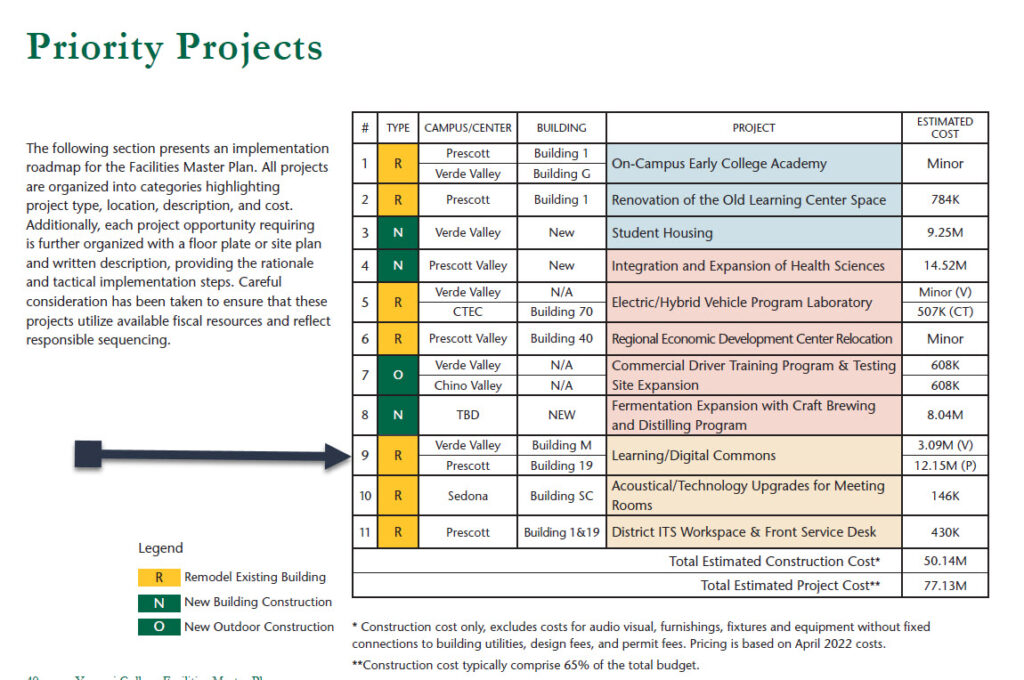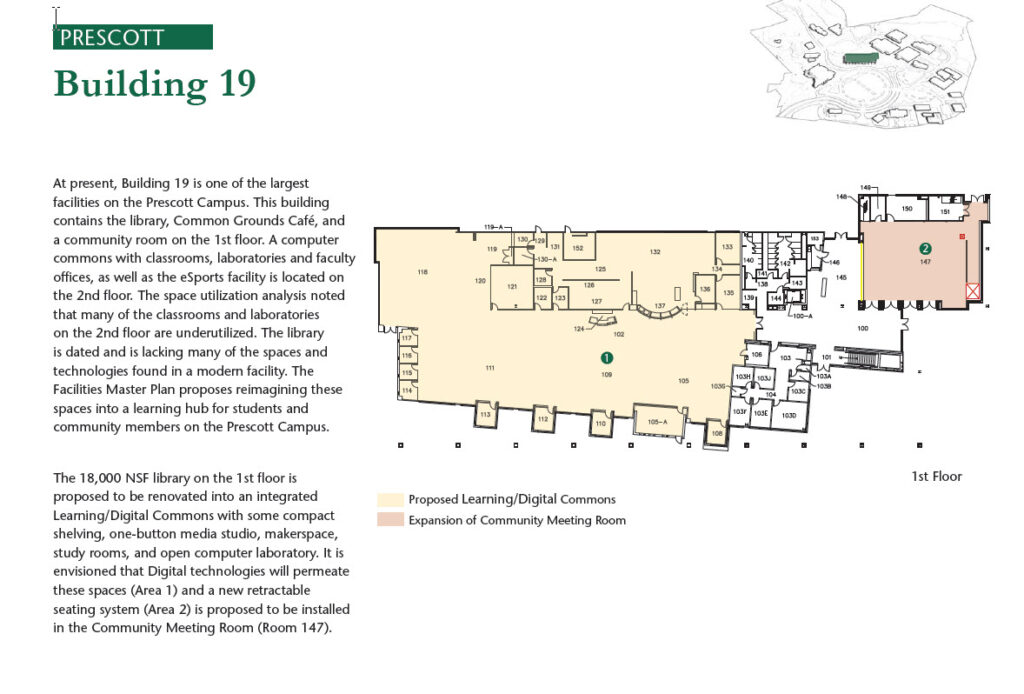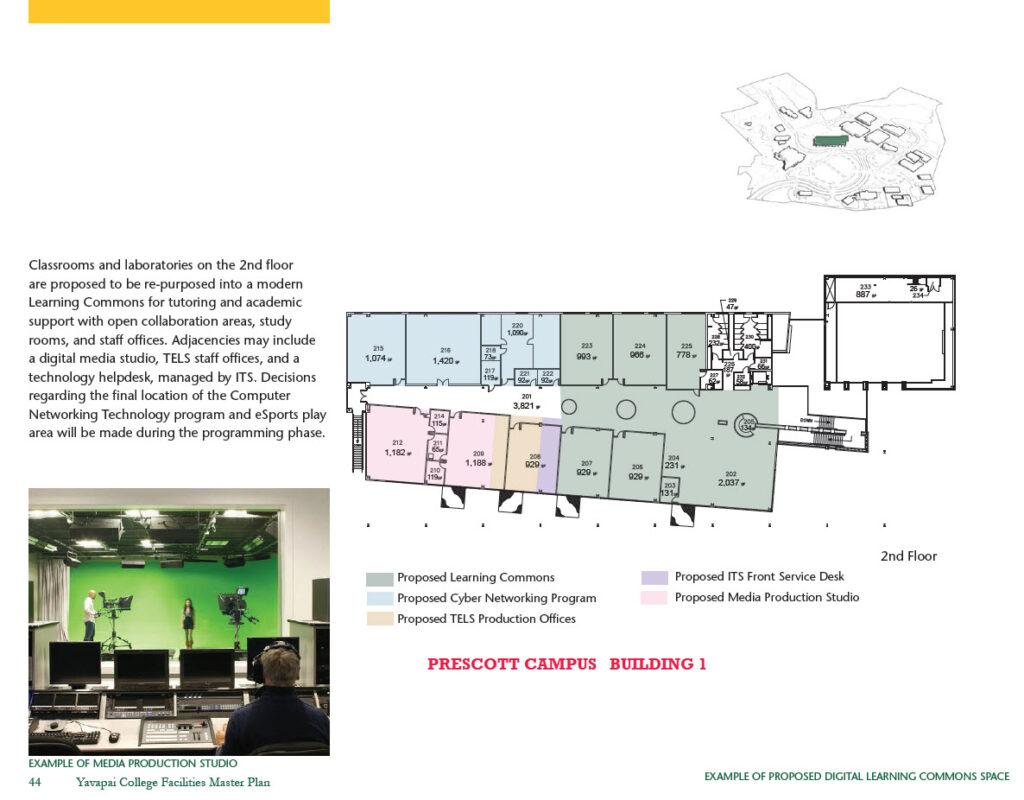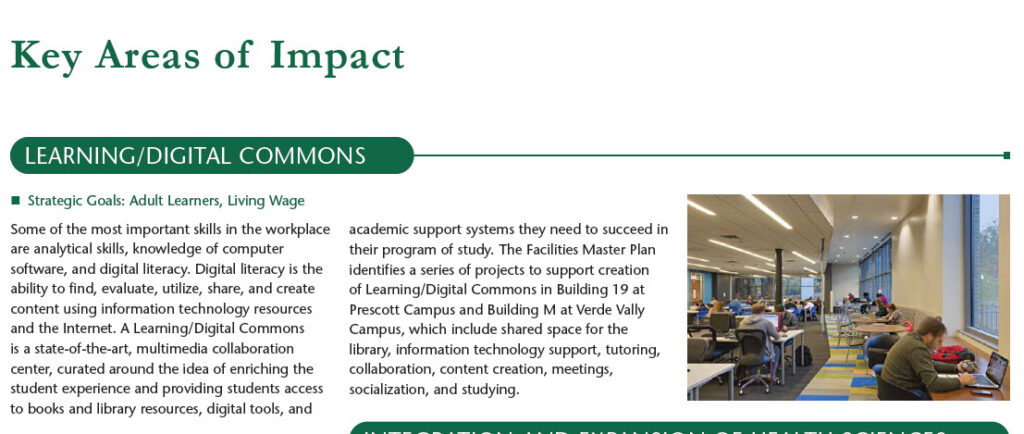College shrouds “Sensory Integration Accelerator” project mostly in secrecy; PR Department ignores request for more information; Community caught off guard because of Board’s November 2022 approval in concept of most important capital projects with no mention of expanding CTEC; Moreover, there was minimal disclosure to taxpayers prior to and at the May 2023 budget approval meeting
During the May 2023 Yavapai Community College District Governing Board meeting, where the budget for the upcoming 2023-24 year was approved, one of the most unexpected developments was the decision to allocate $10 million over three years for the expansion of the existing 108,000 square foot, eight-acre Career and Technical Education Center (CTEC). This expansion aims to increase CTEC’s size by an additional 20,000 square feet. The suddenness of this decision caught many attendees by surprise, leaving them with limited information about the specific details and rationale behind the expansion.
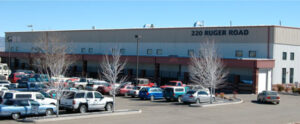 No explanations were provided prior to the May 2023 budget meeting supporting the sudden decision to increase the size of CTEC, especially considering that the College already possesses 108,000 square feet at that facility. Similarly, no clarifications were given regarding why the specific amount of $10 million was chosen, nor was there any disclosure regarding the portion of funding that might come from state grants. Furthermore, it remained unclear whether the $10 million would be spent regardless of the availability of state funding.
No explanations were provided prior to the May 2023 budget meeting supporting the sudden decision to increase the size of CTEC, especially considering that the College already possesses 108,000 square feet at that facility. Similarly, no clarifications were given regarding why the specific amount of $10 million was chosen, nor was there any disclosure regarding the portion of funding that might come from state grants. Furthermore, it remained unclear whether the $10 million would be spent regardless of the availability of state funding.
Another surprising revelation emerged from a confidential executive meeting of the Community College District Governing Board on June 8. During this meeting, a decision was made to acquire a property in Prescott, located west of the airport. The exact purchase price of the property remains undisclosed. The purpose of this acquisition is currently unknown, but there are speculations that it might be intended to expand the footprint of CTEC. The lack of transparency surrounding this decision has left the community uncertain about the college’s intentions with the newly acquired property. (For more information about the purchase, please click here.)
Adding to the residents’ surprise was the fact that the expansion of CTEC was never discussed during the important District Governing Board meeting held November 2022. At this meeting the Board considered all priority projects submitted to them by the College administration and experts hired by the College. The Board then went ahead and approved all of the priority capital projects in concept. Despite the presentation of a detailed chart allegedly prepared by the College experts for that meeting, which outlined the various priority projects and their estimated cost, the CTEC expansion was conspicuously absent from the chart or any discussion.
This is what information the Blog has been able to gather so far:
-
-
-
- At the May 2023 budget approval meeting, page 74 of the budget book states: “Yavapai College will expand the Career and Technical Cetner (sic) (CTEC) by up to 20,000 square feet. Within the expanded space, the college will construct new programs and move a few existing programs to meet Freeport’s current and future workforce needs. Specifically, the space will be used to train technicians with the newest automation and Al technologies.”
- At the May 2023 budget hearing, Dr. Clint Ewell provided the following short explanation for the sudden addition: “Last, but not least, we’ve been working on some leads with the State regarding workforce accelerators, which is some state funded money to help local businesses advance their workforce training skills. So we’re partnering with free Port Mac Moran and putting our name in the hat. We’re hopeful, perhaps even optimistic, that we will get money to help them train their next generation of automation technicians and using artificial intelligence to help diagnose what’s going on with their processes.”
- Finally, Chair Deb McCasland made a vague comment at the end of the budget approval process regarding potential state funds. She said: “And just another point on the capital projects. We are estimating that we will receive 16.4 million dollars to support the capital improvements from outside sources non taxpayer dollars. So we are being very frugal. . . .”
-
-
The Community College’s persistent adherence to secrecy raises numerous concerns. Such opacity undermines the trust that residents have placed in the institution. By choosing to withhold information or failing to meaningfully provide it, such as detailed reasons it suddenly decided to allocate $10 million in taxpayer dollars to a particular project, the Community College not only fails to foster an environment of openness and accountability but also exacerbates the skepticism and unease felt by community members. Transparent and inclusive decision-making processes are essential for building trust and ensuring the collective well-being of all stakeholders.
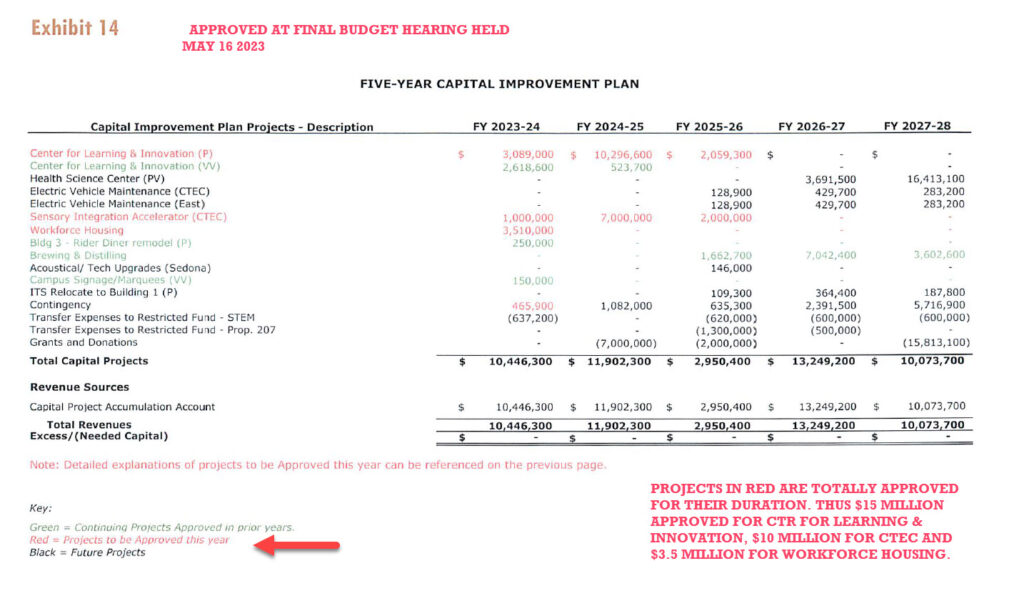
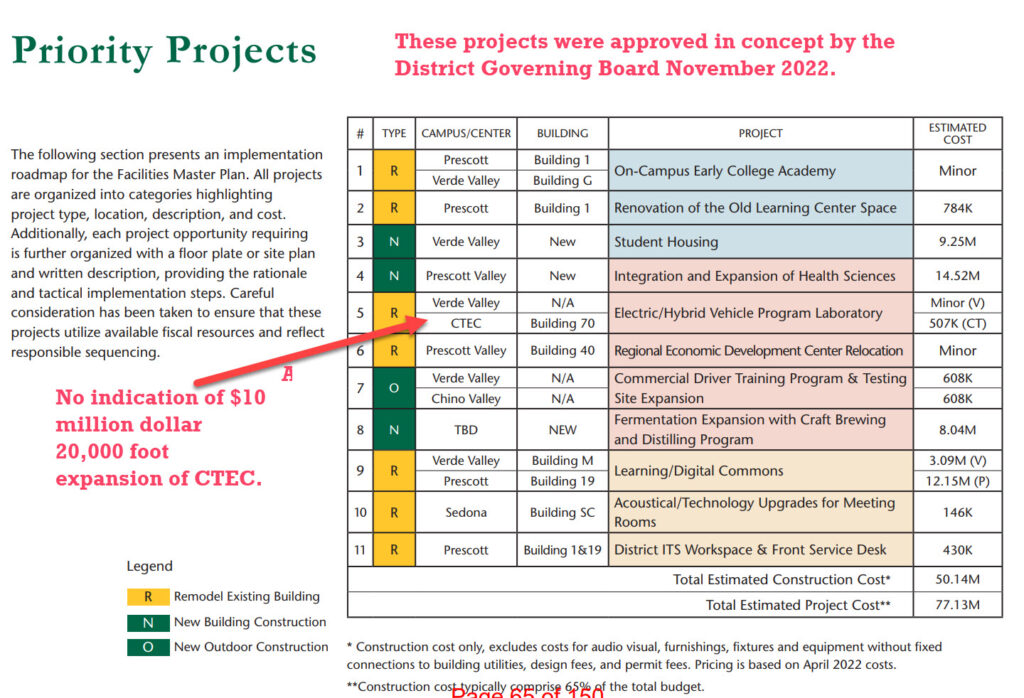
 Community colleges in Arizona are witnessing a rise in programs focused on “workforce accelerators.” This initiative gained momentum with former Governor Doug Ducey, who, on March 31, 2021, joined local elected leaders in Pinal County to inaugurate a cutting-edge advanced manufacturing training center in Coolidge, Arizona. Named Drive48, the facility was described as representing a groundbreaking collaboration among government, industry, and academia, aimed at strengthening Arizona’s workforce training for high-tech jobs.
Community colleges in Arizona are witnessing a rise in programs focused on “workforce accelerators.” This initiative gained momentum with former Governor Doug Ducey, who, on March 31, 2021, joined local elected leaders in Pinal County to inaugurate a cutting-edge advanced manufacturing training center in Coolidge, Arizona. Named Drive48, the facility was described as representing a groundbreaking collaboration among government, industry, and academia, aimed at strengthening Arizona’s workforce training for high-tech jobs.

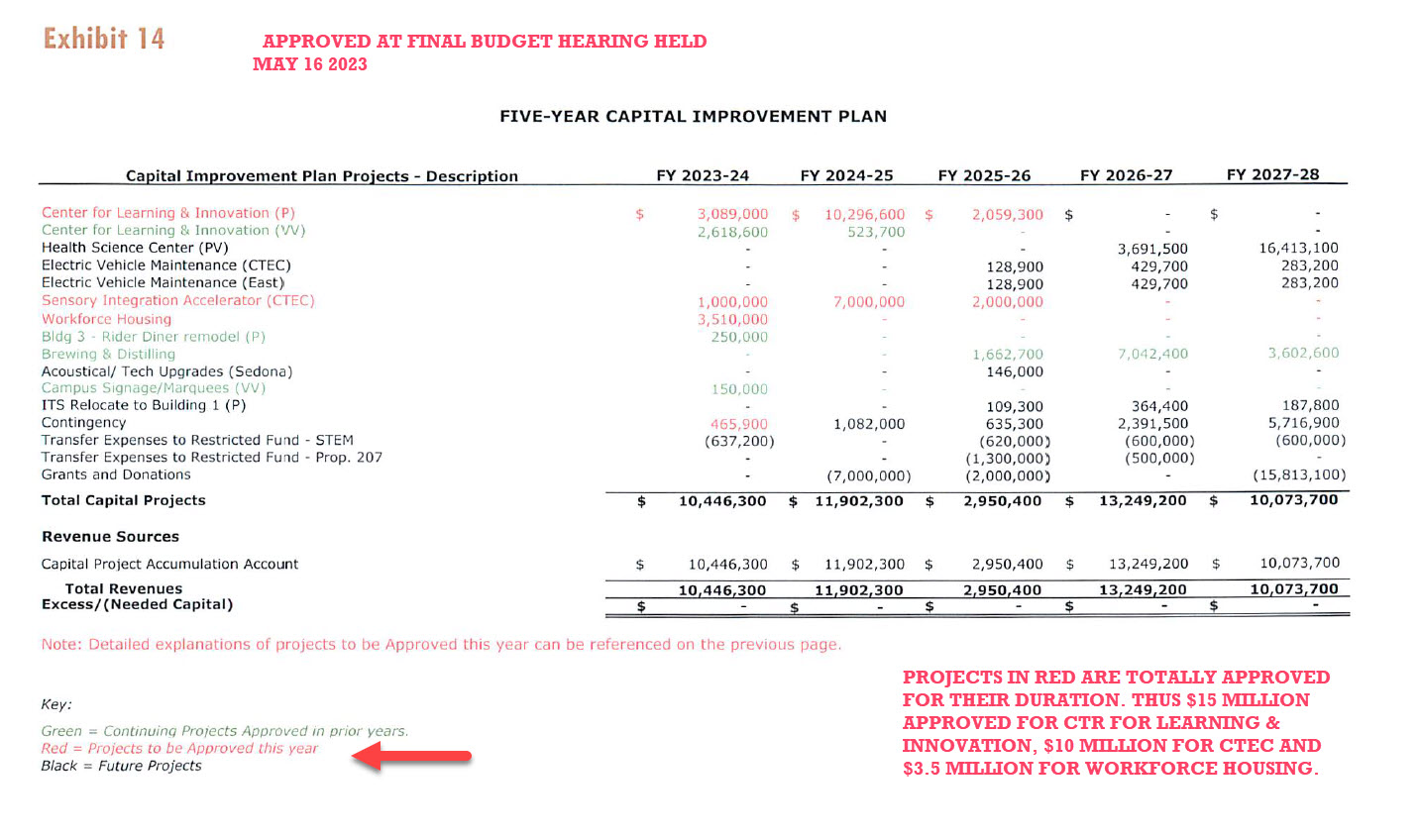
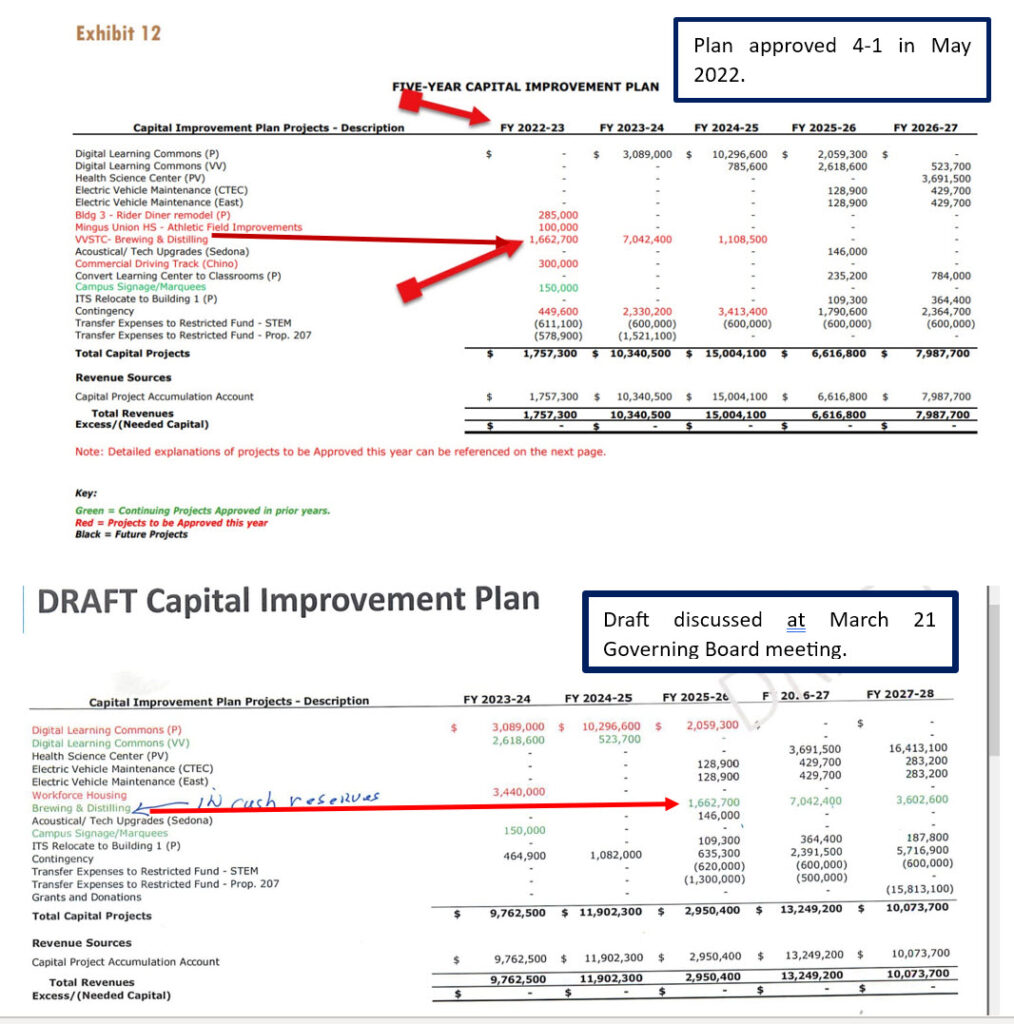
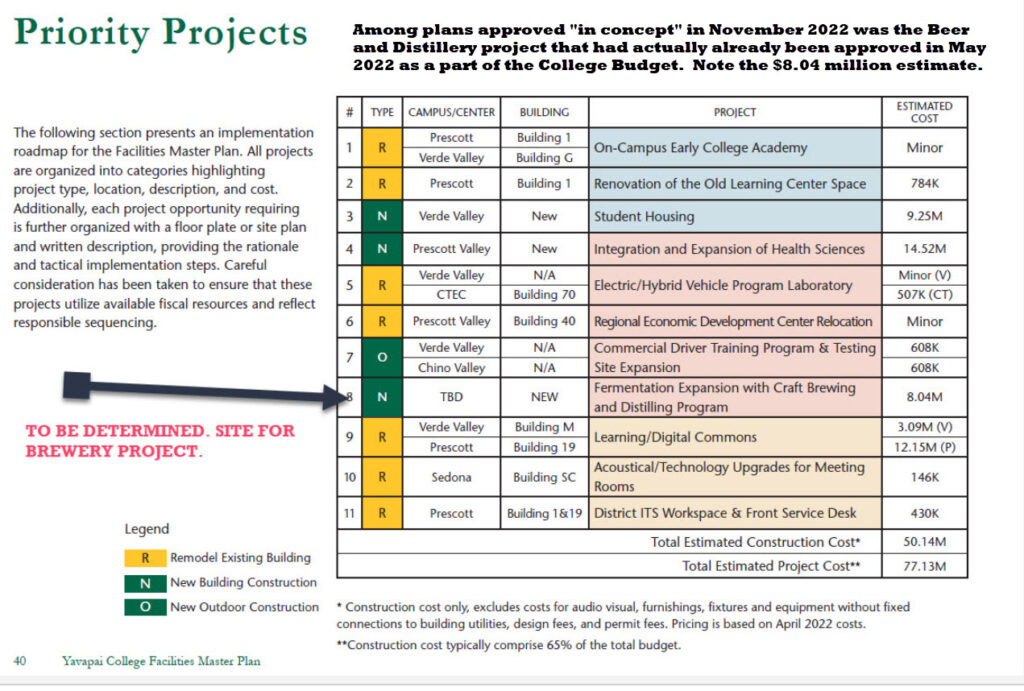
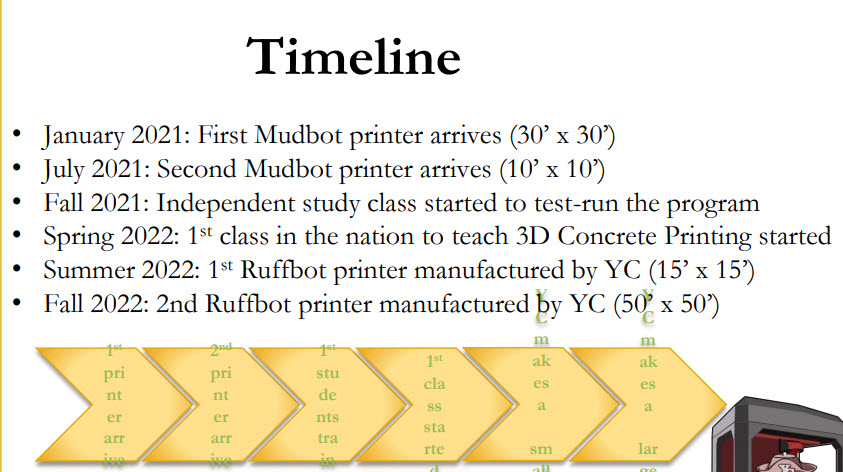
 The exact status of the proposed and approved $8 to $10 million Verde Valley beer brewery project remains unclear. Although the Prescott-based executives who decide major Community College issues for the Verde Valley have made no formal announcement, the postponement notice appears in the October and December Community College Facilities Newsletter. (See below)
The exact status of the proposed and approved $8 to $10 million Verde Valley beer brewery project remains unclear. Although the Prescott-based executives who decide major Community College issues for the Verde Valley have made no formal announcement, the postponement notice appears in the October and December Community College Facilities Newsletter. (See below)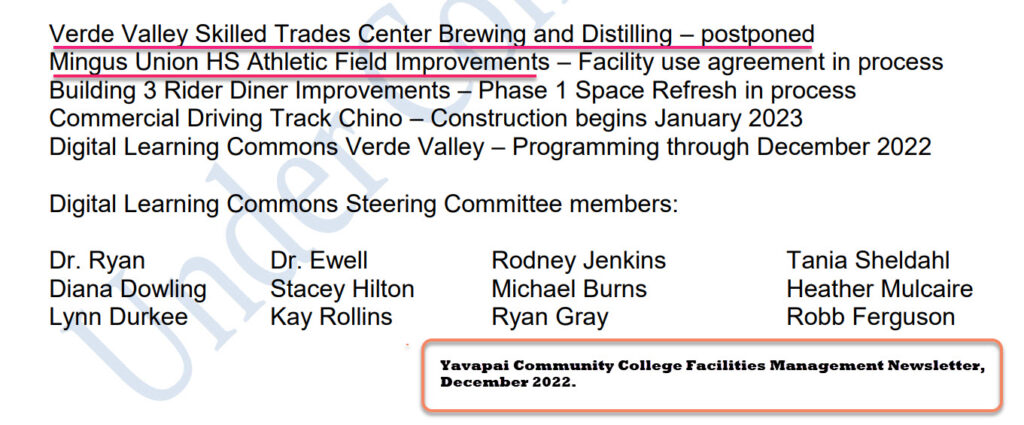
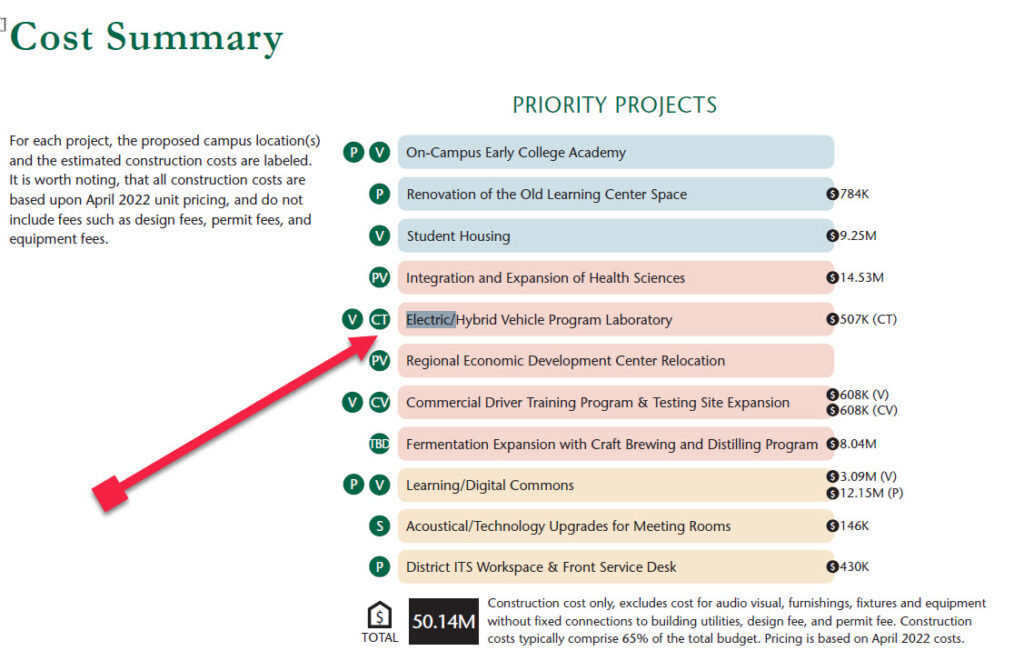
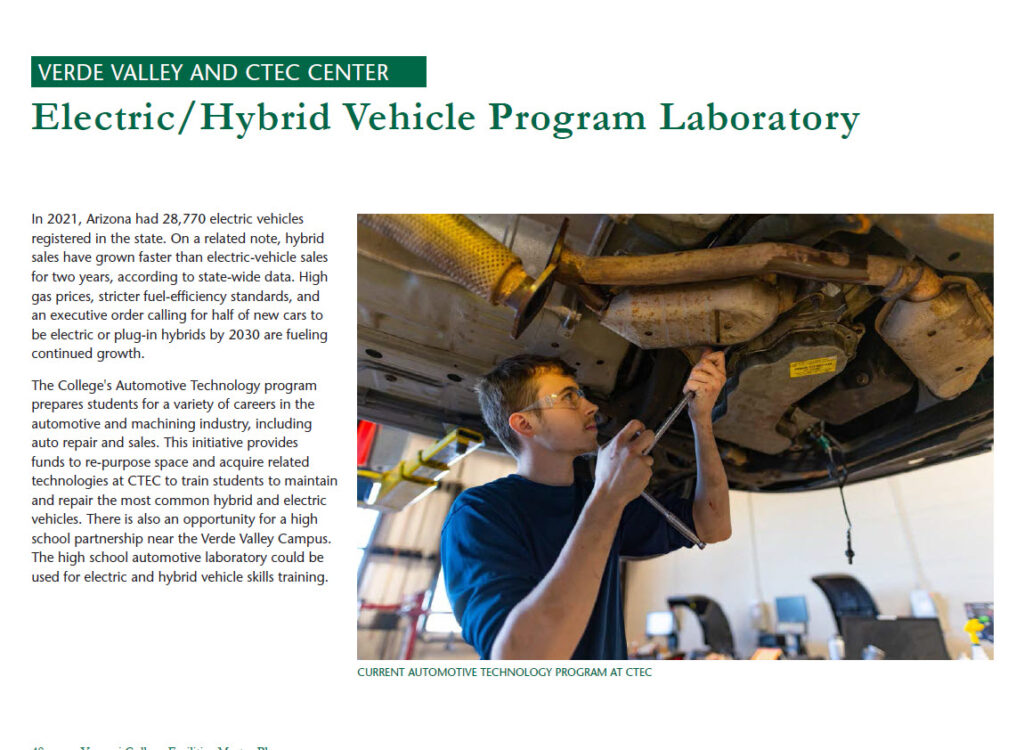
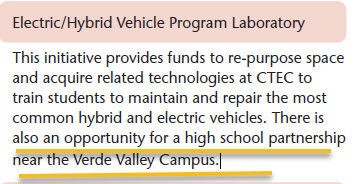
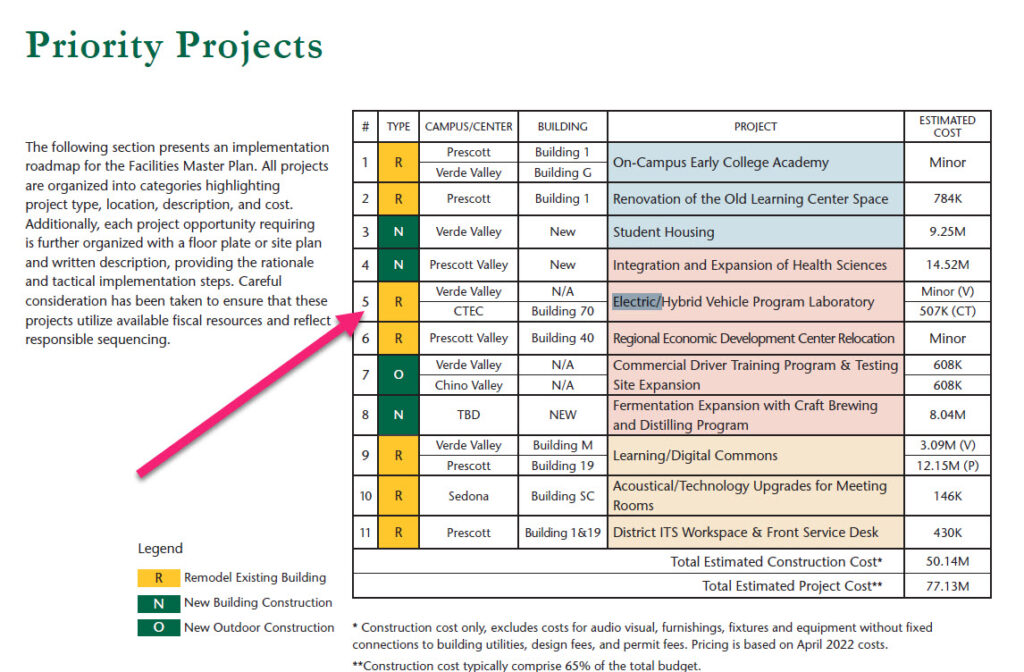
 According to the brief answers given to a Board member at the November meeting, the advisory committee meets twice a year and advises the College on how it should move in developing automobile related issues such as when to move on developing its Electrical Vehicle program.
According to the brief answers given to a Board member at the November meeting, the advisory committee meets twice a year and advises the College on how it should move in developing automobile related issues such as when to move on developing its Electrical Vehicle program.